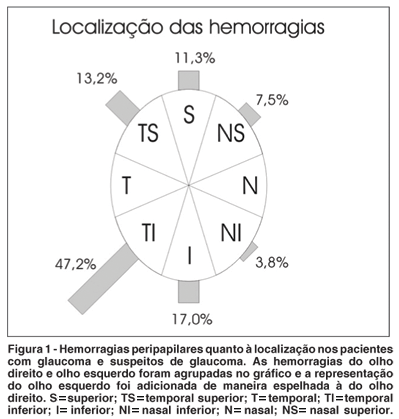PURPOSE: To investigate the correlation between optic disc hemorrhages (ODHs) and the position of the central retinal vessel trunk (RVT) in patients with glaucoma. METHODS: Fundus photographs of 1,830 participants were reviewed. The exit position of the central retinal vessel trunk was classified as being in the superior or inferior hemisphere of the optic disc and the relative vertical position was expressed as a fraction of the disc diameter (ratio between the position of the trunk and the diameter of the disk). A group of patients from the same population, but without ODHs, was randomly selected and compared with the patients with ODHs. RESULTS: Among the 1,830 patients, 53 hemorrhages were detected in 41 patients with glaucoma or suspected glaucoma. We found an inverse relationship between the inferior/superior position of the central RVT and the inferior/superior position of the hemorrhages (Kappa= -0.34). Using the trunk/disc ratio, we found that superior ODHs correlated with inferior RVTs (trunk/disc ratio, 0.450; SD=0.070) and inferior ODHs correlated with superior RVTs (trunk/disc ratio, 0.510; SD=0.054) (p=0.027). The number of patients with normal tension glaucoma was significantly higher among patients with ODHs than among those without ODHs (p=0.009). CONCLUSION: Our patients had a negative correlation between the position of central RVT and the location of the ODHs. Normal tension glaucoma was more prevalent among patients with ODHs than among those without it.
Optic nerve; Retinal hemorrhage; Retinal vessels; Glaucoma





